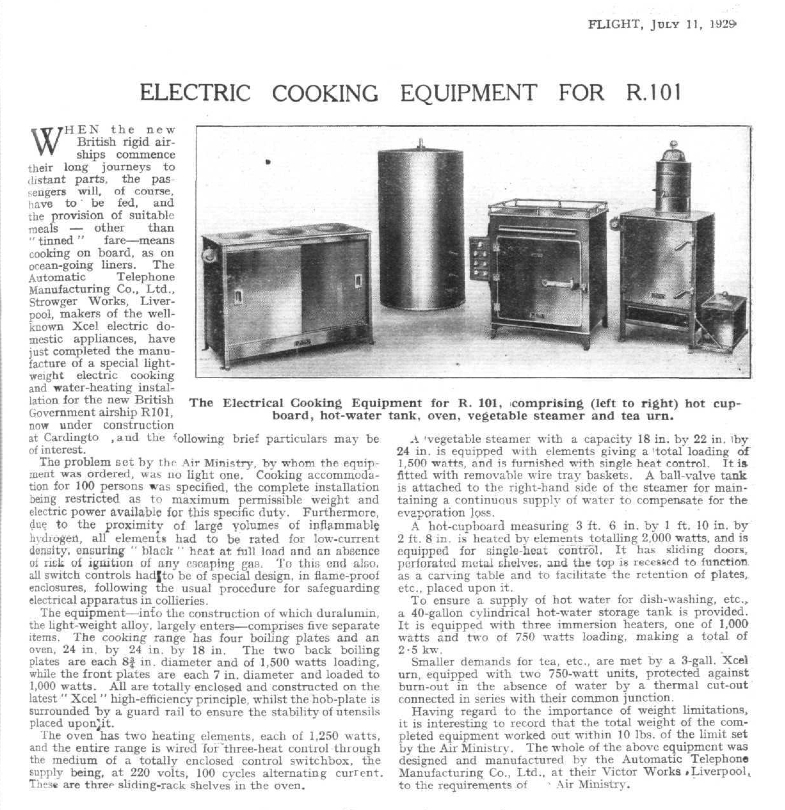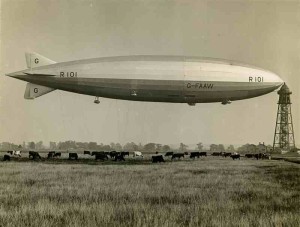The British R-100 and R-101 airships, both of which were finished in 1929, were designed and built under conditions that were bizarre. For political reasons a different government ministry was given control of each airship project, even though they were supposed to be built to the same specifications. The teams that built them were so competitive that they shared no information with each other and contracted with different suppliers for parts. If both had ever gone into regular service, as had originally been planned, two complete warehouses of spare parts would have been necessary, and any crew members who transferred from one ship to the other would need to be retrained. I have not been able to find out much about the specifications of the R-100’s kitchen, but came across this article about the R-101’s from Flight Magazine in July of 1929.
The kitchen equipment was built by the Automatic Telephone Manufacturing Company, Ltd. of Liverpool, which had little previous experience making anything but telephone switching equipment, but had just started a division to manufacture traffic signals. What either of these has to do with inflight kitchens is questionable, but the equipment they made apparently worked well – it was used to prepare meals aloft for groups of up to 100 people who took demonstration rides during the testing period.
Unfortunately the rest of the R-101 was not built to the same standard – the design had been more ambitious than the R-100, using unproven technology, and the resulting airship was unstable, difficult to steer, and used heavy, unreliable engines. The operators of the craft decided that to prove their design was sound they would fly it to India for its maiden voyage, rather than ease it into service on shorter runs. They were so determined to show that they could run on schedule that the R-101 left for the journey despite heavy rain and fifty mile per hour winds (over 80 km/h). The inexperienced crew was unable to control the ship, and it crashed into a ridge near Beauvais, France, less than 175 miles from its starting point. It was a fatal setback for the British airship industry; despite the fact that the better built and more thoroughly tested R-100 made a successful trip to and from Toronto, Canada, no more airships were built in Britain. Though some military airships were built in the Soviet Union, the Zeppelin company had an effective monopoly on commercial passenger airship service, and they reaped great prestige until war put an end to operations.
